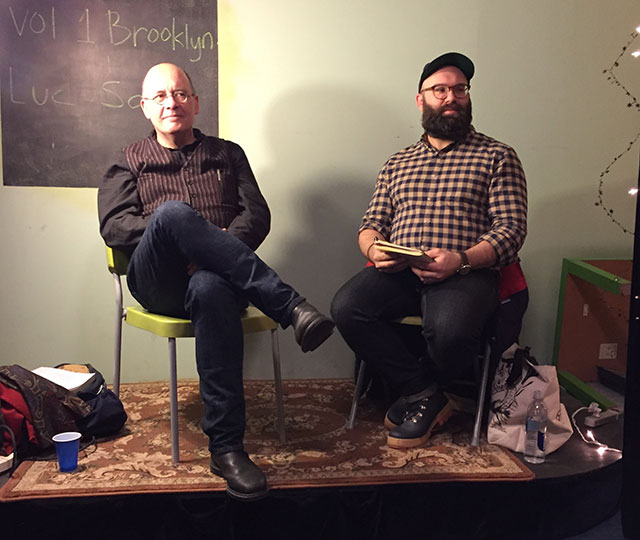
Luc Sante discussed The Other Paris with Jason Diamond of Vol 1. Brooklyn at WORD Bookstore in Brooklyn last week. Sante previously has written Low Life: Lures and Snares of Old New York, a portrait of the city. The Other Paris similarly explores Paris.
Sante admits in The Other Paris, he had not set out to write a new Lowlife. The once he actually began writing and researching the book, it became obvious to him that he was. Sante grew up in New Jersey and in Belgium. He traveled back and forth across the Atlantic many times during his childhood, so much so that he says he didn’t really know where he was living.
Belgium is a lot like the New Jersey of Europe, he says, in part because of its proximity to Paris. His childhood was very much linked to both New York City and Paris and soon it became obvious that there would be similarities to Lowlife in the new book.
New York and Paris are “arrogant cities,” he says, and yet there are some very good reasons that people call them the capitals of culture. That distinction did not come about accidentally.
The first time Sante was in Paris was for just four days with his mother. It was November. They visited the Louvre. Back then the museum and Paris as a whole felt a bit broken down and dusty. The paintings he saw scared the shit out of thim — Delacroix, David. When things scare him, he takes it as an indication there is some greater meaning to it.
For a long time Paris has been threatened by large corporations and global brands steamrolling over the cultural history. He is reluctant to make predictions about the future though: “one of the great things about the future is that attempts to predict it are wrong.”
In writing The Other Paris, he eventually saw himself as following a template laid out by Lowlife. He was thinking musically and cinematically to arrange the focus of the book in terms of a wide angle that eventually focuses in on the characters.
He tried to make his research as organic as possible. He would find things in flea markets in Paris and New York. He collected pictures and images. He had more than 900 pictures. He couldn’t include them all and eventually culled that to 365 printed in the book along the margins. Of those images though, he had found a lot of postcards of the city. At one point it had been popular to send postcards local neighborhoods around the world, and he ended up finding a number of these seemingly random street corners.
He had a lot of material, perhaps too much. He wanted a final draft in the 300 page range so that people would actually read it not simply buy a hulking doorstop and neverread it. That meant cutting 40% of his notes, many being his personal anecdotes.
Asked if he would consider writing about London, he explained that unlike Paris and New York, London was not a city that he had a particularly personal connection to. It wasn’t his city to write about.